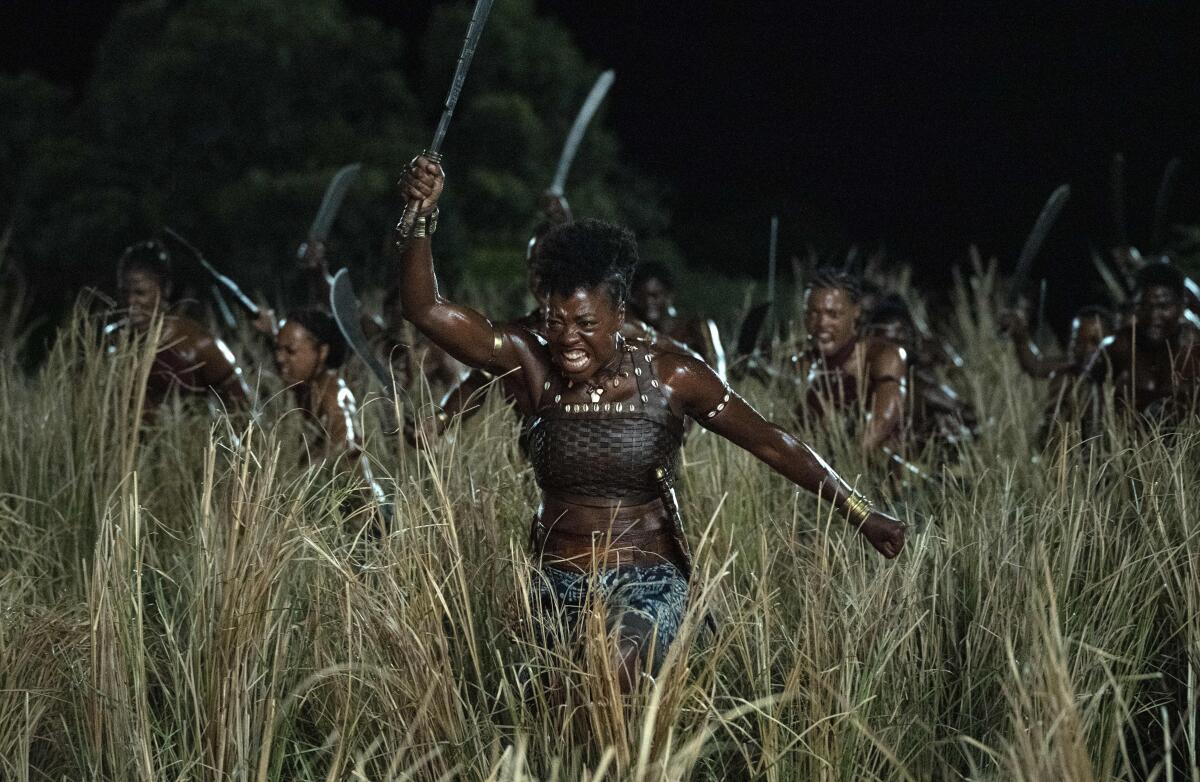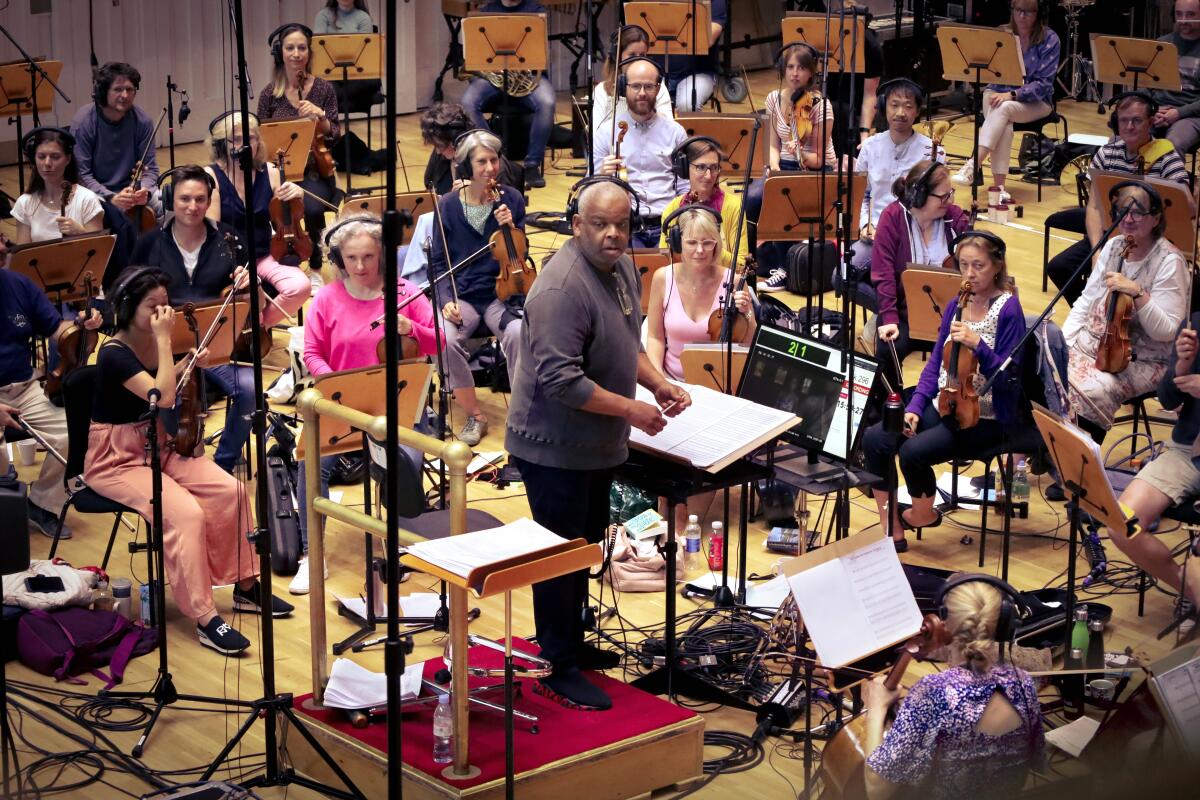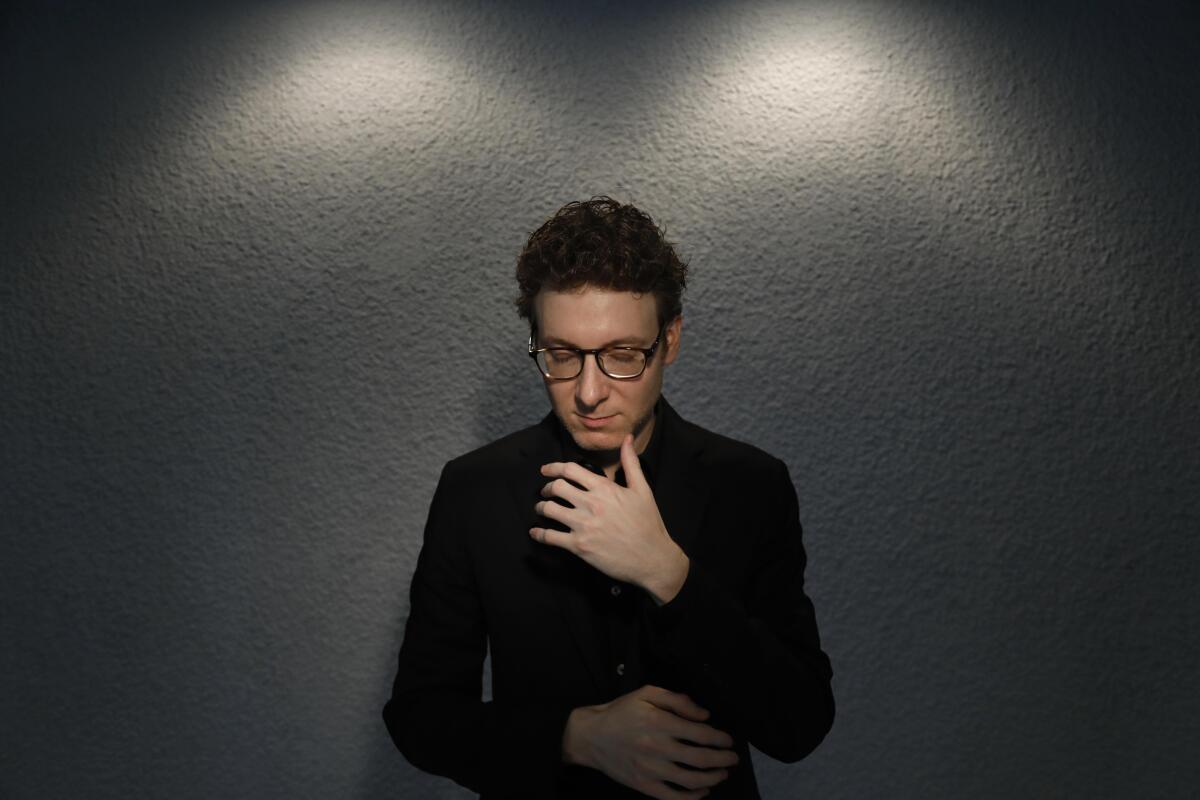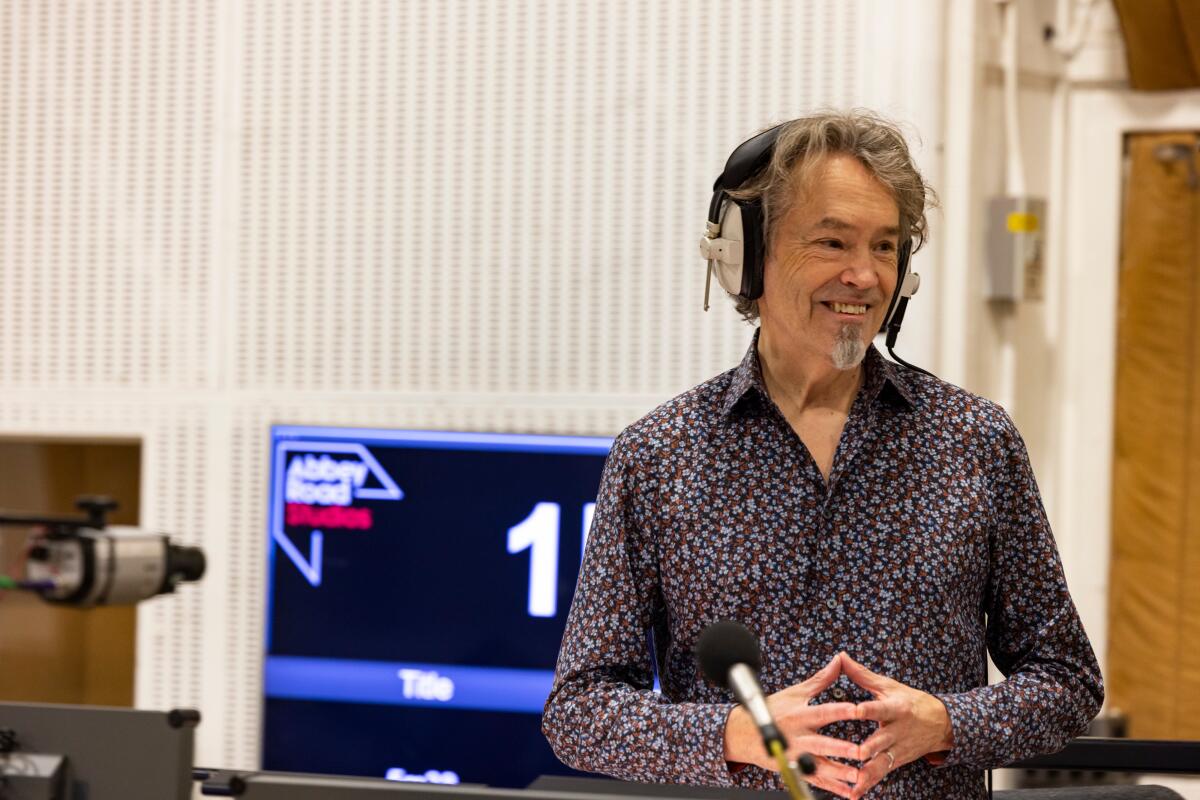Film scores cover a spectrum of sounds and musical colors. Here are a few of note.

- Share via
The word “spectrum” came up in almost every interview with the Oscar-contending composers spotlighted in this issue. Sometimes it was about favoring the lighter or darker ends of an emotional range, or in one case honoring the continuum between female warriors from 19th century Africa and the women in a composer’s own life. With “Nope,” it was part of Jordan Peele’s whole concept for the film.
The spectrum of sounds and musical colors heard in this year’s best scores extend from the subliminal (“Tár”) to the explosive (“She Said”), from childlike innocence (“The Banshees of Inisherin”) to cries of war (“The Woman King”). Three scores — “Women Talking,” “Nope” and “White Noise” — all slide between the hopeful, warm music of home and the countdown of a doomsday clock (look for them elsewhere in this issue). The movie music of 2022 bristled with pent-up fury and pitch-black humor, ancient evils and contemporary monsters, men with emotional blockages and women who need to finally erupt. Here are three that were fittingly lyrical, flammable, and — at times — very funny.

Terence Blanchard
“The Woman King”
Terence Blanchard was glad he first saw “The Woman King” alone — “because I was crying my ass off, man,” he says, laughing. “And I was trying to be cool, you know. But those last two scenes, to me, make the movie.”
In Gina Prince-Blythewood’s film about the female warriors of the West African Kingdom of Dahomey, Viola Davis plays Agojie leader Nanisca, a fierce machine of a woman whose vulnerability and heart only slowly begin to crack open. Without giving anything away, Blanchard was moved by that progression but knew he had to hold his emotional cards until just the right moment.
Late jazz drummer Art Blakey “used to do this thing where we’d have to play this cue, and then that’d be the end of the show,” Blanchard remembers. “But he would do this vocal thing, he’d go: ‘Boom — not yet! Boom — I’ll tell you when!’ And then, ‘Right here — BANG.’ That’s what I kept feeling like working on this. It’s like: no, no, no, not yet, not yet.”
He scored the opening scenes, which paint a portrait of the vibrant, thriving Dahomey village, with African pastorale — bouncing a string orchestra along with a gentle groove on regional instruments including kalimba and kora. Music for paradise before the fall.
“The beauty and the pageantry of this kingdom, that sets up everything else,” Blanchard says. “So, for me, the music had to have that warm, familiar kind of resonance to it. I wanted to make it feel like this is a neighborhood that anybody would want to be a part of.”
In the film, there’s the line, “There’s an evil that they don’t know is coming,” referring to the encroaching slave trade. “That’s the juxtaposition of the music, right there,” says Blanchard.
“Them walking to the kingdom and milling around — versus Nanisca, who’s outside the kingdom and sees the reality of what’s going on. There’s a broad distinction between the two.”
The spiritual and emotional vulnerability in the story was what made the film’s kinetic action sequences work, Blanchard believes — and he wanted to contrast and complement the two poles.
Chorus plays a large role in his score — whether chanting, singing or humming — fronted by singer Dianne Reeves. Blanchard was thinking about how the South African vocal group Ladysmith Black Mambazo always reminded him of American gospel music.
“When I started thinking about the Agojie women and how strong they were,” he says, “it seems like that DNA carried over into the women that I grew up with. For me, there’s this connection of the way I was raised and what I was looking at on screen. And growing up in a church, that music is a very communal music and a very powerful music.”
“In a weird way,” he says, “it feels like I was reconnected to something that I was taken away from. ... [It] just felt familiar, in a way that I can’t explain. I wanted the music to be culturally connected to Dahomey but still spiritually connected to our lineage.”

Nicholas Britell
“She Said”
Nicholas Britell has featured cellist Caitlin Sullivan on the majority of his film scores — most prominently in “If Beale Street Could Talk.” But when he saw “She Said,” an intense procedural about the two New York Times reporters who broke the Harvey Weinstein sexual assault story and sparked the #MeToo movement, he felt strongly that she should play an even bigger role.
“There are many parts of the film where I would tailor things to match the investigation, and to follow those really functional needs,” he says. “But I think what really drew me to this was to explore the inner emotional world. And the wonderful outgrowth of that was getting to collaborate with Caitlin as the co-producer on the score — which is something we’ve never had the opportunity to do before.”
Sullivan and Britell are also married and have known each other since just after high school.
“Every single day we talk about music,” Sullivan says, “and I think we just basically live and breathe all of these conversations about what we feel about music, what artists are exciting us. ... But it felt like a pretty natural progression to want to just work a little bit more deeply together.”
Sullivan had a strong emotional reaction to Maria Schrader’s film, which stars Carey Mulligan and Zoe Kazan as Megan Twohey and Jodi Kantor fearlessly unraveling the decades-long cover-up of Weinstein’s sexual predation and empathizing with the trauma of his many victims. She translated feelings of fury into visceral effects — like snapping strings on the fingerboard of her cello, or plucking a string with the back of her nail “to create a percussive, reverberant, repetitive sound that I felt was gritty but also tenacious.”
She came up with a swirling arpeggio effect, which Britell turned into a motif for the “memory of trauma.” It “symbolizes this idea of the complexity, and the pain, and the feeling of needing to deal with this in some way,” he says. “You don’t know when this is going to come back, and occasionally it rears its head. That’s something that the score is actively trying to express.”
The largely strings and piano score swirls and snaps and crescendos, at times crashing in huge sonic waves — exploding on behalf of these women who have been terrorized into silence.
“There was this docudrama feel of it,” Britell says. “At the same time, I felt that it was really important that the full range of emotion was felt through this. It’s not a documentary. And on the surface there is this investigation, there is this search for truth, and for the real story — but I think one of the really special things that Maria did, that the whole film does, is it gets into this question of public and private, of the sort of inner feelings and outer feelings of the world.”
“That was really the center of the emotional world that I was looking for in the music,” he says, “was this question of how to balance people’s public lives and their private lives, and the inner journey of both Megan and Jodi — but also in a sense, I think, all women.”

Carter Burwell
“The Banshees of Inisherin”
One of the first things Martin McDonagh said to composer Carter Burwell about his new film “The Banshees of Inisherin”: “I don’t want any Irish film music in this.”
Burwell laughs: “So I had to take that seriously.”
The story is set on a fictitious Irish island and populated with ultra-Irish characters — led by Colin Farrell and Brendan Gleeson as two old friends whose relationship is suddenly and inextricably ruptured.
“Everything else is very Irish,” says Burwell — “the accents, the clothes, the situation, the pub. He wasn’t clear with me what he wanted to do, but it’s clear that what he didn’t want it to do was for the music to leave you in Ireland. He wanted it to take you someplace else.”
Burwell focused on Farrell’s character, Pádraic, a farmer characterized by his friend as a dullard. He wrote slow-walking music for celesta, harp, marimba and glockenspiel — which “all seemed to work in terms of basically painting him like a kid, like a man-child. These are all instruments you might find in an elementary school.”
One of the temporary musical tracks McDonagh used was, surprisingly, a piece of Indonesian gamelan music. So Burwell subtly layered in elements of gamelan gongs underneath that high, childlike music. “It made it not quite so cheery,” he says. “There’s something there that doesn’t quite fit, and you can’t really put your finger on what it is. There’s some mystery at the bottom of the tune.”
Just as there’s a mystery on this island, with characters in despair and an old crone who prophesies their deaths, where a simple tiff escalates into self-mutilation and attempted murder. Pádraic starts out seemingly on the innocent end of the moral spectrum — but over time he travels to some pretty dark extremes.
Burwell liked having his music on these bell-like idiophones, because “they’re never going to get sentimental. There’s no such thing as a sad marimba line. So it kind of inoculates you, using those instruments, from worrying about the music getting actually sad itself.”
Yet it’s a deeply sad movie that’s also very funny, a nexus that McDonagh and Burwell seem to have perfected.
“I think it’s safe to say we both see life as endless tragedy that you have to somehow find a punchline for,” Burwell says — with a chuckle.
More to Read
From the Oscars to the Emmys.
Get the Envelope newsletter for exclusive awards season coverage, behind-the-scenes stories from the Envelope podcast and columnist Glenn Whipp’s must-read analysis.
You may occasionally receive promotional content from the Los Angeles Times.










